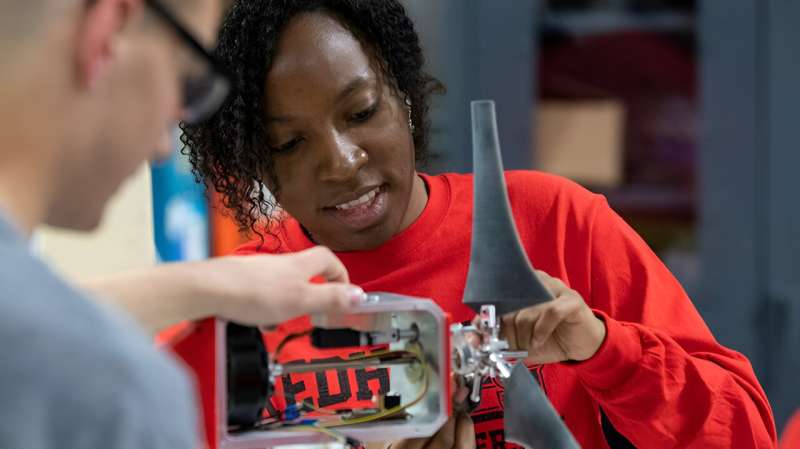
U.S. land-based and offshore wind energy markets are expected to grow significantly over the next few decades. With this growth, the demand for properly trained wind energy workers will also increase to meet national deployment targets.
A new National Renewable Energy Laboratory (NREL) report, "National Wind Workforce Assessment: Challenges, Opportunities, and Future Needs," estimates that in 2030, the demand for workers could reach 258,000, whereas the supply of full-time workers might reach only 134,000—a shortfall of approximately 124,000 workers.
The report builds on a 2019 report released by NREL that identified the wind energy workforce gap, in which wind energy employers indicate difficulty finding qualified applicants while recent graduates and current workers indicate difficulty finding open work positions.
"Although wind continues to be a major renewable energy source in the United States, there are still barriers to establishing a properly trained workforce that can meet future capacity goals," said Jeremy Stefek, an NREL researcher and one of the report's authors. "As we strive to achieve a 100% net-zero-carbon economy by 2050, it's more important than ever to connect the dots between education, training, entry-level jobs, and long-term careers in the clean energy sector."
First-of-its-kind model
Stefek and other NREL researchers created a new system dynamics model, which leverages mathematical techniques to represent complex problems, like U.S. wind energy workforce supply and demand. This is the first time such a model has been used to quantify the wind energy workforce gap.
The report also incorporates data from a survey of wind energy stakeholders—students, wind energy companies, wind employees, and education and training programs—designed to better understand current workforce challenges and identify factors that could help narrow the gap.
As with findings from NREL's previous research, the survey described a wind workforce gap that features a lack of applicants with experience or required training and education, an inadequate number of job applicants, and job openings in geographic locations that are not where job seekers want to live.
Ways to narrow the gap
Despite its projected shortage of wind energy workers in the coming decades, the NREL report identifies strategies to close the wind energy workforce gap. Developing a properly trained and adequately sized workforce will require stakeholders to:
- Raise awareness. Industry and educational and training institutions should collaborate to provide relevant coursework and build awareness of wind energy industry job opportunities among students.
- Increase training. Industry firms and educational institutions should increase and establish internship and apprenticeship programs and pipelines, which equip students with the technical skills they need to gain wind energy industry employment.
- Create connections. To help meet the growing demand for trained wind energy workers, industry members can connect with future workers through workforce training programs like the NREL-managed DOE Collegiate Wind Competition, which provides participating students with real-world wind energy experience.
- Emphasize inclusivity. Industry firms and educational and training institutions should build partnerships with community-based organizations focused on diversity, equity, and inclusion to help make wind energy careers more accessible to a broader and more diverse workforce.
"Our research underscores the need to support increased education and training while improving student perception of wind energy career opportunities to lessen the wind workforce gap," Stefek said.
Complementing the report are the following stakeholder-specific presentations for use in situations including:
- The educators-to-students presentation, which helps students gain insight into education and steps they can take to narrow the workforce gap
- The industry-to-students presentation, which helps wind energy industry employers understand how they can take action to address hiring difficulty
- The current workers-to-industry presentation, which is intended to help employers to gain insight into the wind energy workforce gap from the industry side and actionable steps that can be taken to address hiring challenges that firms face
- The Connective Actions for Educational Institutions and Wind Industry Firms presentation, which offers educators and industry employers ideas for narrowing the workforce gap by raising awareness of career opportunities among jobseekers and reducing hiring challenges.
More information: National Wind Workforce Assessment: Challenges, Opportunities, and Future Needs. www.nrel.gov/docs/fy24osti/87670.pdf
Citation: Study unlocks opportunities to bridge the US wind energy workforce gap (2024, April 19) retrieved 19 April 2024 from https://techxplore.com/news/2024-04-opportunities-bridge-energy-workforce-gap.html
This document is subject to copyright. Apart from any fair dealing for the purpose of private study or research, no part may be reproduced without the written permission. The content is provided for information purposes only.
